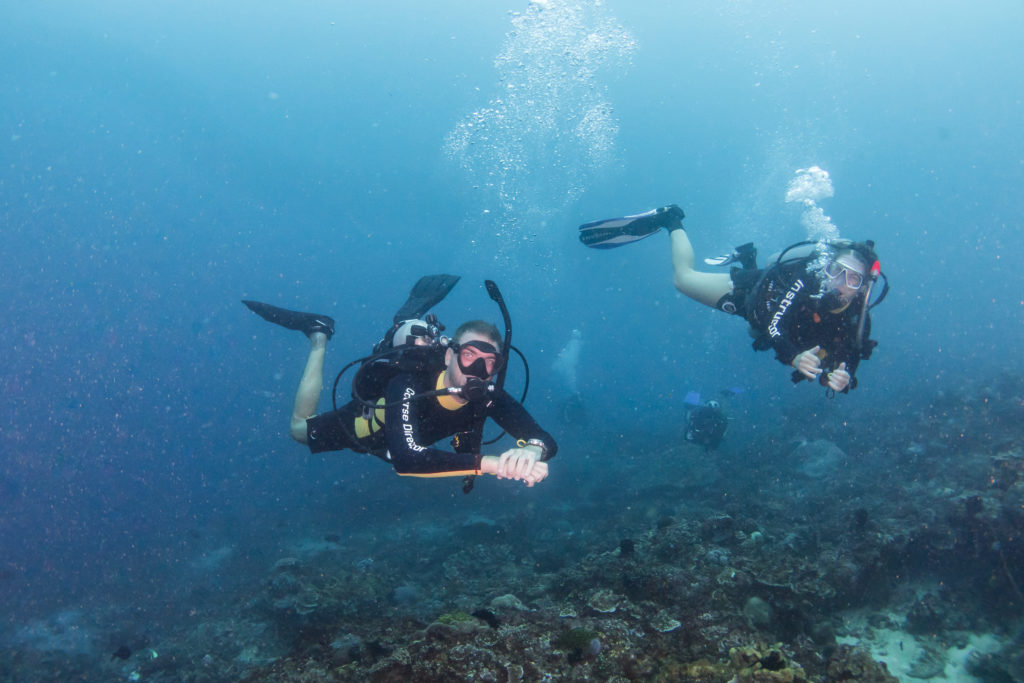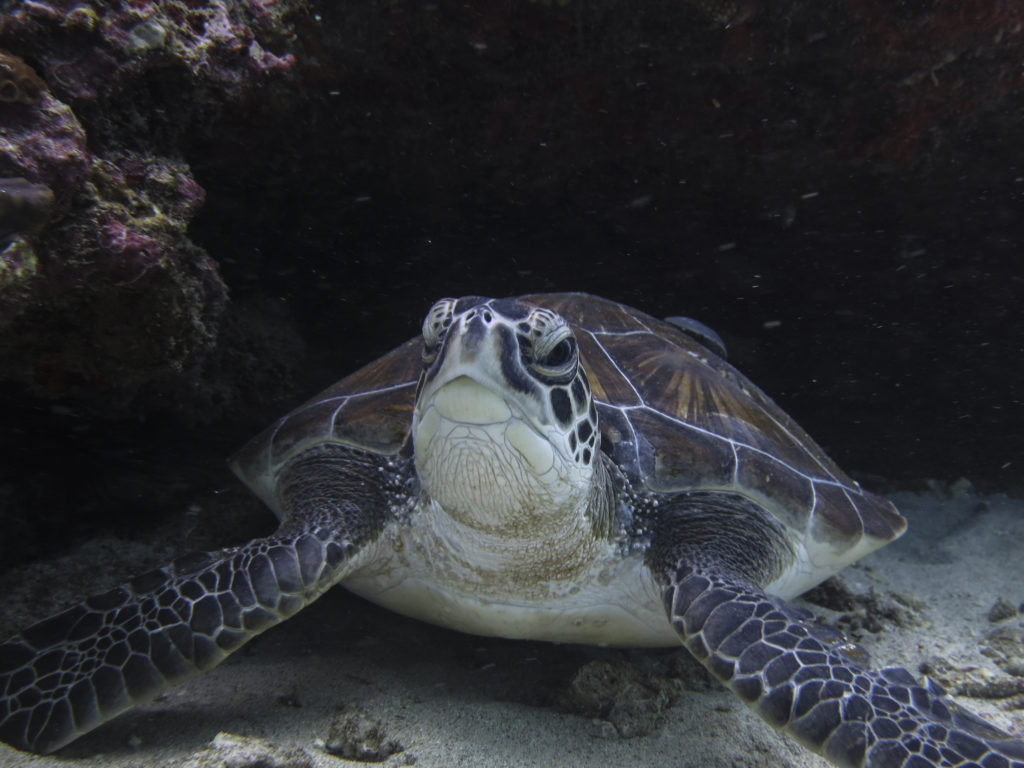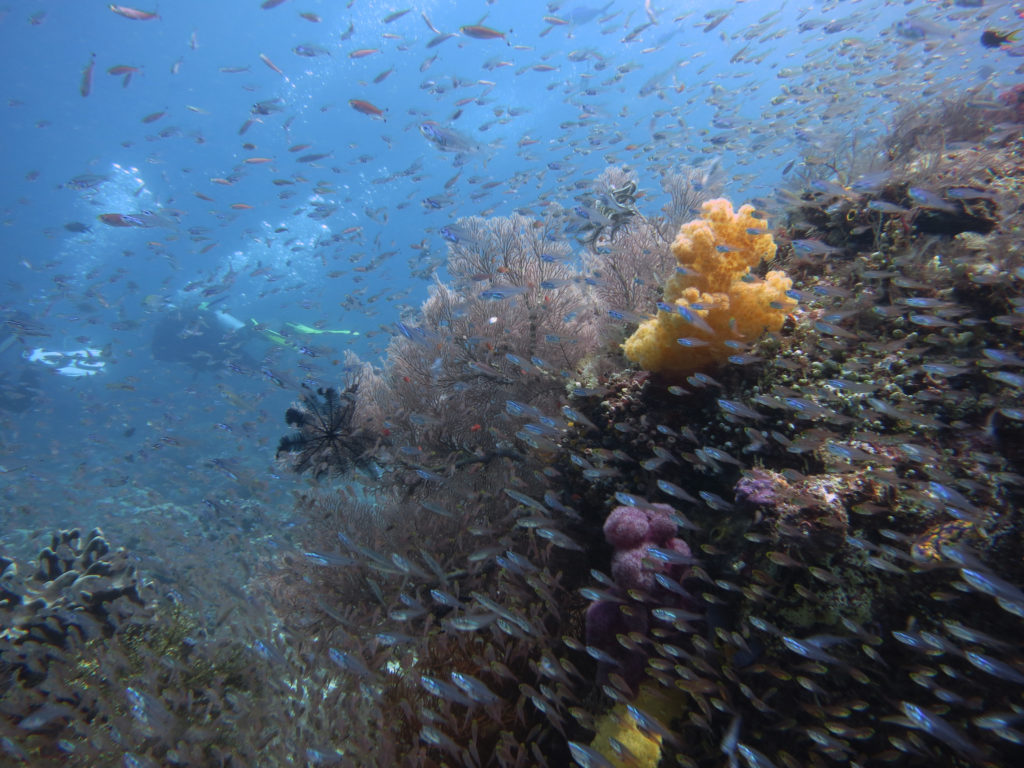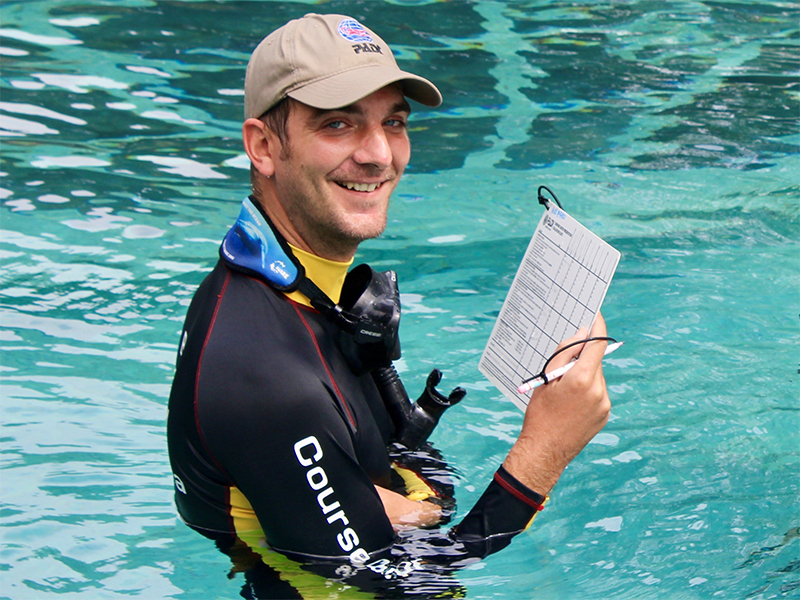Leading Dives Around Bali
Diving around Bali is famous for its beautiful corals, huge wrecks and large animal encounters such as Manta Rays and Mola Mola. Diving in these pristine conditions especially around the island of Nusa Penida can be challenging and most dive sites have an element of drift diving to them.

Diving in currents can take practice as professional level candidates learn to spot different types of currents and try to anticipate that dreaded down current! This can take many dives and never more has it been so important to build experience and dive multiple sites a different times of tide to get the best understanding of these types of conditions. One can spend a lifetime learning about these and the more respect we show the ocean the more we learn about the more likely we are to keep our guests safe.
Leading certified divers or teaching students in these conditions can be a daunting challenge for Divemaster and Instructor candidates. How can you safely look after your guests and expand their experience and skills while maintaining good control?! Below are a few pointers to get you going!

Divemaster Tips for Drift Diving
- Be prepared! We all know the importance of an effective pre-dive safety check! Make sure all your equipment is functioning properly before entering the water. Make sure all your students and guest’s perform a thorough check and are familiar with their buddys equipment. The last thing you need is an equipment issue as you are being pushed away from your entry point.
- Make sure you know the site and conditions! Dive the site multiple times to get used to it! Dive it at different times of tide and build you confidence and knowledge. Of course you can never 100% predict the ocean but there are some good signs to look out for! Get advice from more experienced divers and professionals. We all know dive sites that don’t follow the “normal rules” of good times to dive!
- Dive properly weighted! Make sure you and your guests have the correct amount of weight on! Having enough weight to comfortably control their descents is very important! Novice drift divers also tend to breath heavier in a current, either due to being slightly nervous and or getting used to the water movement. Having good buoyancy control will also allow your guests and students to get slightly closer to the reef where the current is a bit weaker. The further away from the reef you dive the faster the current will get.
- Descend as a team! Make sure you and you guests or students can make the descent together! This can either be done using a trail line or a negative entry technique! Again at sites when the drift is strong its important you can get down together at the same pace to maintain good group control. This can be challenging with groups of mixed ability so make sure you have enough staff to manage the group! If you are going to be doing negative entry, practice this ahead of time at a dive site with no current and advise your guests on the correct technique!

Drift Diving - Crystal Divers
- Keep your eyes peeled! Make sure that you are looking “into the current”. Many guides like to keep their guests and students behind them so that they can see “what’s coming”. Watch the fish and soft corals for signs of currents pushing up or down! Fish will face into the current! Make sure that you can communicate your instructions effectively! An audible signal is extremely useful for this! Making sure your guests are close together and close to the reef will assist in this! Be prepared to change body position quickly! Either to fin or use the BCD in the event of a sudden down or up current. If you and your guests are going to be equipped with reef hooks make sure they know how to use them in an environmentally sensitive way! Again, practice ahead of time on a dive site with little or no current!
- Communicate with surface! Make sure you are proficient at sending up an SMB. This might vary from place to place. Maybe you need a line up the whole dive! If so use a good float with a long sturdy reel. Hold onto it and never clip it to yourself or equipment. If you’re diving with a DSMB like we mostly do around Nusa Penida then make sure you have enough strong line on your reel. Send the SMB up at a suitable time towards the end of the dive! This will allow your and other boats to see you in plenty of time! Ascend together as a team close to the SMB after completing your safety stop!

Professional Dive Internships
Diving around Bali is some of the best in the world. But it is not without its challenges. Make sure you allow enough time to learn the sites with strong currents effectively. Its one the reasons our Divemaster courses have no time limit! The Divemaster internship is all about developing good judgment and that does need a certain level of exposure to differing dive environments!
Make sure you having fun out there! Drift diving is often compared to flying! Once the basic skills are learnt it is one of the most enjoyable forms of diving! Bali is one of the best places to take your Divemaster or Instructor Internship and I firmly believe if you can lead and teach out here you can do it anywhere!
See you underwater in the drift soon!




